
The 11 Gorkha Rifles is a Gorkha regiment of the Indian Army that was re-raised after independence. The regiment consists of primarily the Kirant Tribes Rai, Limbu, Yakkha, Sunuwar of Eastern Nepal, Darjeeling, Kalimpong, Dooars of West Bengal, Sikkim and other parts of Northeast India. Though it is considered to be the youngest of the Gorkha regiments its lineage is as long as those of the 7th Gurkha Rifles and 10th Gurkha Rifles.
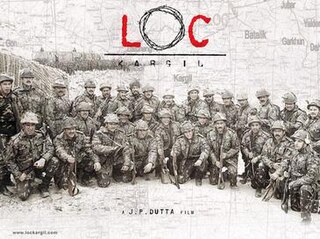
LOC Kargil is a 2003 Indian Hindi-language historical war film based on the Kargil War fought between India and Pakistan, produced and directed by J. P. Dutta under his banner "J. P. Films". The film features an ensemble cast of Bollywood stars and music composed by Aadesh Shrivastava and Anu Malik, with the former composing the score and the latter composing the songs.
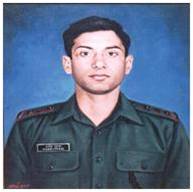
Captain Manoj Kumar Pandey, PVC was an officer of the Indian Army who was posthumously awarded India's highest military honour, the Param Vir Chakra, for his audacious courage and leadership during the Kargil War in 1999. An officer of the first battalion, 11 Gorkha Rifles, he sacrificed his life for the nation in battle on bunker hill edge of the Khalubar Hills in village Garkon Aryan Valley of Kargil.
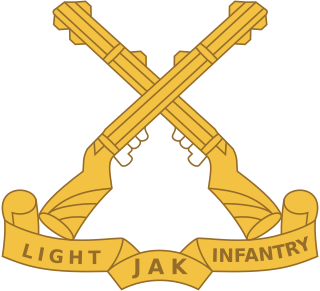
The Jammu and Kashmir Light Infantry is an infantry regiment of the Indian Army. The regimental center is in Srinagar's Airport Complex at Awantipora with a winter setup near Jammu. Its regimental insignia consists of a pair of crossed rifles. The regiment mostly consists of volunteers from the state of Jammu & Kashmir and ethnic groups from the state. The Jammu and Kashmir Light Infantry is considered to be one of the most decorated regiment of the Indian army having won 1 Param Veer Chakra and 3 Ashok Chakra. Naib Subedar Chuni Lal of the 8th battalion Jammu and Kashmir Light Infantry is one of the most decorated personnel of the Indian Army.

The Garhwal Rifles, formerly known as the Royal Garhwal Rifles, are an infantry regiment of the Indian Army. It was originally raised in 1887 as the 39th (Garhwal) Regiment of the Bengal Army. It then became part of the British Indian Army, and after the Independence of India, it was incorporated into the Indian Army.

Since the independence of India in 1947, as per the terms of the Britain–India–Nepal Tripartite Agreement, six Gorkha regiments, formerly part of the British Indian Army, became part of the Indian Army and have served ever since. The troops are mainly from ethnic Gurkha communities of India and Nepal. A seventh Gorkha Rifles regiment was re-raised in the Indian Army after Independence to accommodate Gorkha soldiers of the 7th Gurkha Rifles and the 10th Gurkha Rifles who chose not to transfer to the British Army.
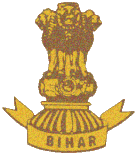
The Bihar Regiment is an Indian Army infantry regiment. It traces its origins back to the British Indian Army. The Bihar Regiment was formed in 1941 by regularising the 11th (Territorial) Battalion, the 19th Hyderabad Regiment, and raising new battalions. The Bihar Regimental Centre (BRC) is located at Danapur Cantonment, Patna, the second oldest cantonment of India. INS Vikramaditya, the Indian Navy's largest ship and one of its two aircraft carriers is affiliated to the Bihar Regiment, Indian Army's highly decorated and battle-hardened unit.
Major Mariappan Saravanan , was an officer in the prestigious Bihar Regiment of the Indian Army who was martyred during the Kargil War. He was killed in hand-to-hand combat with intruders after killing four intruders in the Batalik area of Kargil Sector on 29 May 1999, along with 33 soldiers and four other officers. Saravanan had just completed four years of service on 10 March 1999.
Military operations took place in Ladakh in 1948 during the conflict in Jammu and Kashmir between the Indian Army and Pakistani raiders infiltrated to capture the kingdom of Jammu and Kashmir. The eviction of this invading force of tribal raiders, who enjoyed numerical superiority, better lines of communication, commanding high ground and superior logistics, was a major military achievement for the small force of Indian soldiers.
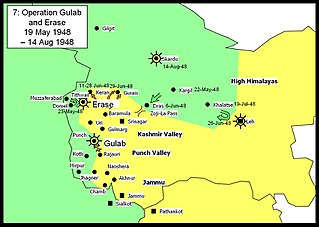
Operation Eraze is the codename of the assault and capture of Gurais in northern Kashmir by the Indian Army during the Indo-Pakistani War of 1947.
Colonel Sonam Wangchuk, MVC is an Indian Army veteran, who served with the Assam Regiment and the Ladakh Scouts. He was awarded the Maha Vir Chakra, India's second highest award for gallantry in the face of the enemy, during his successful operation in the Kargil War. Due to his exemplary feet as a Major during Kargil War, he is known as the Lion of Ladakh in the Indian Army.
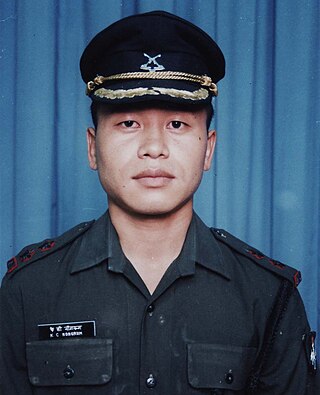
Captain Keishing Clifford Nongrum, MVC was an Indian Army officer of 12 Jammu and Kashmir Light Infantry. He was posthumously awarded the Maha Vir Chakra, India's second-highest gallantry award, for exemplary valor in combat during operations in the Kargil War in 1999.
Havildar Bhim Bahadur Dewan was the leading section commander of 1/11 Gorkha Rifles under Captain Manoj Kumar Pandey, who was tasked to capture "Khalubar South" on 3 July 1999. He was awarded Vir Chakra (posthumously) for his contribution in Operation Vijay against Pakistani Army
Lieutenant Colonel Ramakrishnan Vishwanathan, VrC was the second-in-command of 18 Grenadiers which was conducting operations on and around Tololing mountain, Drass sector, Kargil, during Operation Vijay. He was posthumously awarded the Vir Chakra for his actions during the Kargil War. A Tripunithura a street near Eroor Pisharikovil Temple is named in his honour.

Captain Neikezhakuo Kengurüse, MVC was an Indian Army officer from Nagaland.
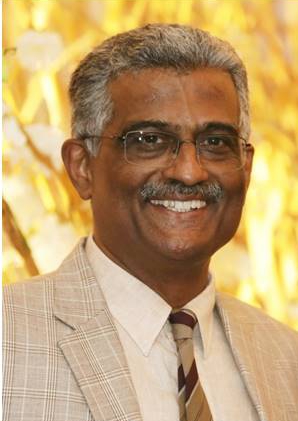
Colonel Magod Basappa Ravindranath VrC was an Indian Army officer. He was awarded the Vir Chakra for his actions in the Battle of Tololing during Kargil War in 1999. He was commanding the Indian Army's 2 Rajputana Rifles battalion that successfully captured the strategic heights of Tololing, Point 4590 and Black Rock in the Drass sector that dominated the Srinagar - Leh Highway, the first major victory that changed the course of the Kargil War.
Brigadier Udai Singh, MVC was an officer in the Indian Army, who served with the 8th Gorkha Rifles regiment. He was awarded the Maha Vir Chakra, India's second-highest award, for his role in the Battle of Turtuk in the Indo-Pakistani War of 1971.
Major General Chittoor Venugopal PVSM, MVC was a General Officer in the Indian Army. He was decorated with the Maha Vir Chakra for his role in the Indo-Pakistani War of 1971.
Major Vivek Gupta MVC was an officer in the Indian Army. He was posthumously conferred the Maha Vir Chakra, India's second highest war-time military honour, for his actions during the 1999 Kargil War.

Captain Jintu Gogoi, VrC was an Indian Army officer of 17 Garhwal Rifles. He was posthumously awarded the Vir Chakra, India's third highest wartime military decoration, for his courage and bravery in combat during operations in the Kargil War in 1999.












